The people from this article learned that something truly valuable can be found in unexpected places like a secondhand store or a flea market. You don’t have to have any special knowledge or skills — sometimes you just have to be a little lucky.
Bright Side is about to show you some photos taken by lucky people who managed to buy some cool and very expensive stuff when they least expected to.
“In high school, I found this vintage apple necklace that I loved at an antique store, but I left it at an ex-boyfriend’s house and never got it back. Yesterday I walked into an antique store and SAW THE SAME NECKLACE! 10 years later and 700 miles away, the treasure hunt always pays off!”

“I found a nice hardcover edition of a book I’ve been wanting to read at Value Village, and I was happy to pay the $5 for it. Then I found this when I flipped through it at home.”
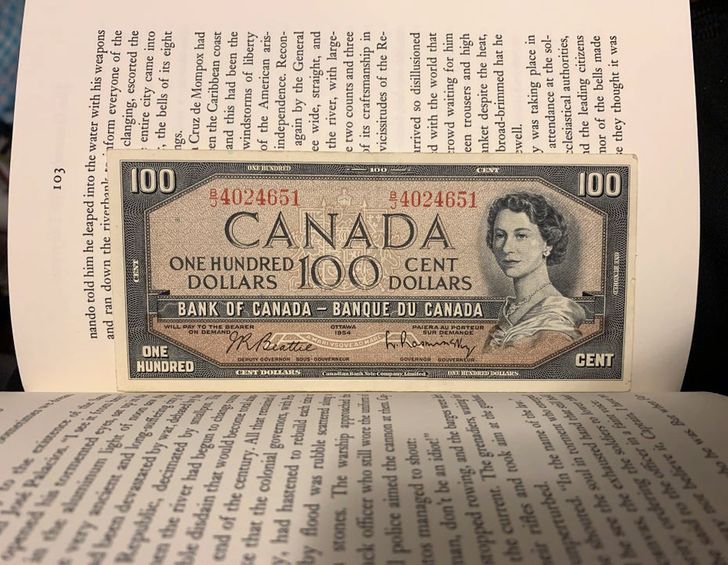
“I always make sure to look through the entire costume jewelry section before leaving and today I found this diamond sapphire engagement ring in a rummage bowl for $2. Took it to a jeweler straight after and they confirmed it was real.”

“I was searching for a suit for a wedding and found a 3-piece with a retail value of $1,700. And I paid $20 for it!”

“Needed an emergency dress for an event yesterday and found one for $9 at my favorite charity shop!”
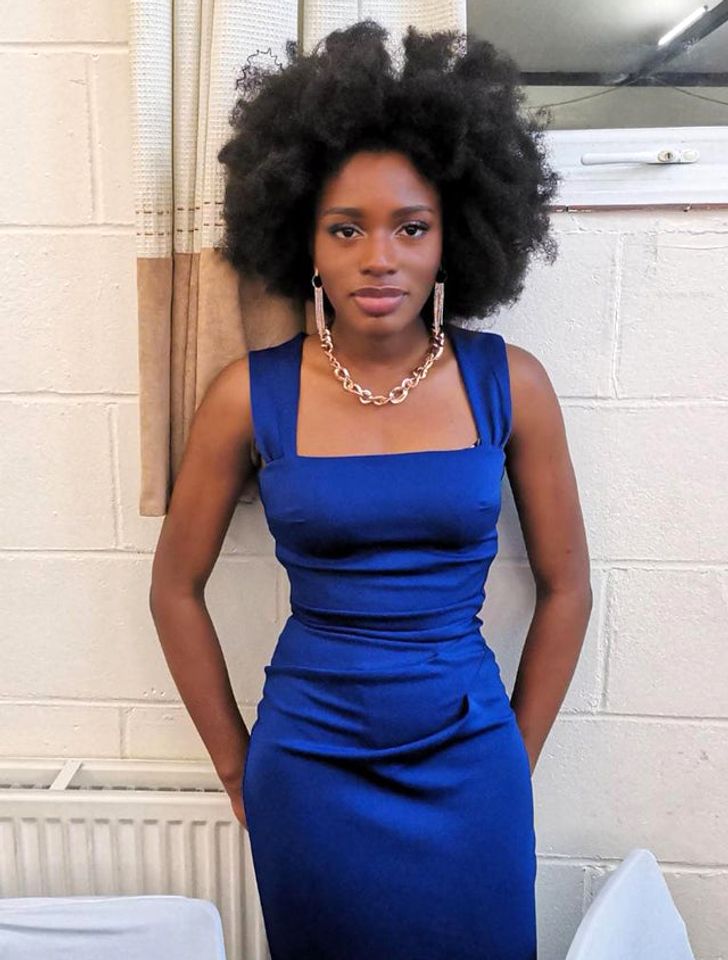
“Found a camera in a thrift store that belonged to a soldier in WW1. It has undeveloped Verichrome film in the back.”
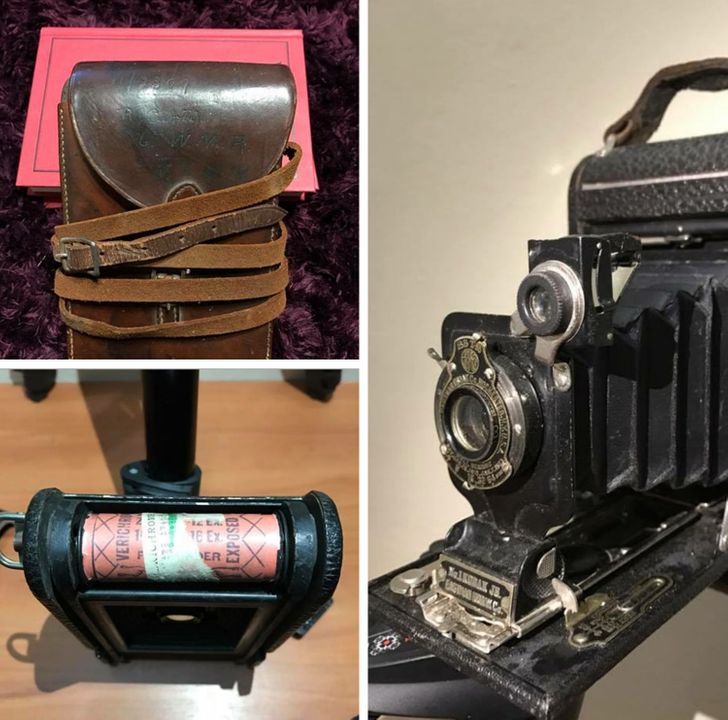
“I found a Loewe ’puzzle’ bag in pristine condition for $20 at Goodwill. It retails at $2,590.”
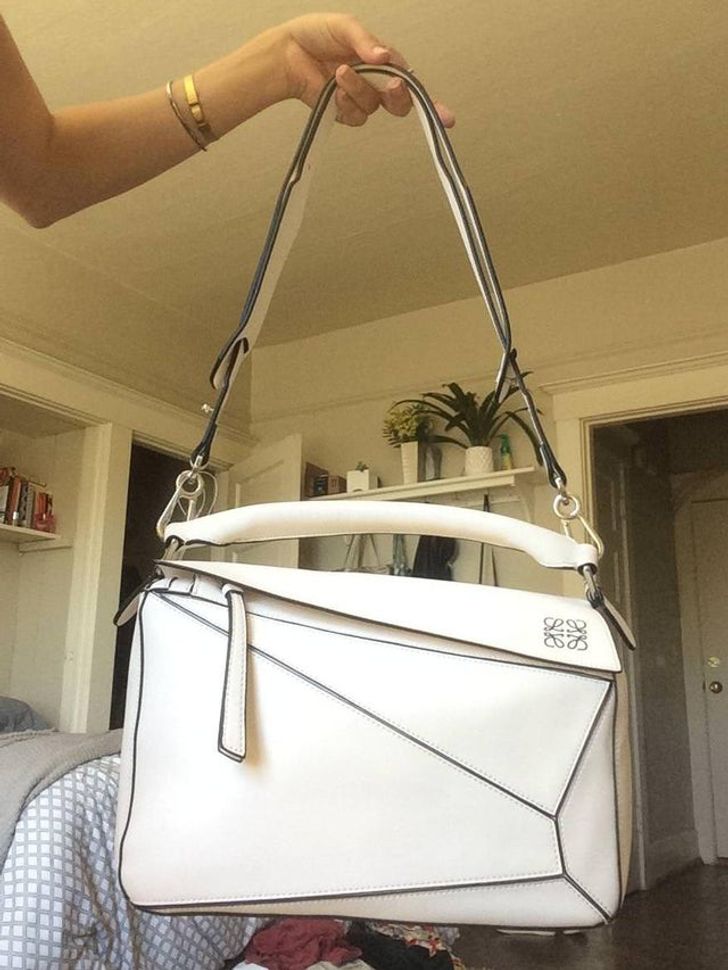
“Always check your piggy banks! Found $170 in a piggy bank that cost $7!”

“Found my wedding dress today. I believe it’s from the 1950s and I only paid $64 for it and I’m in love. Going to add my own twist to the top and redo the corset but the bottom is staying just how it is.”
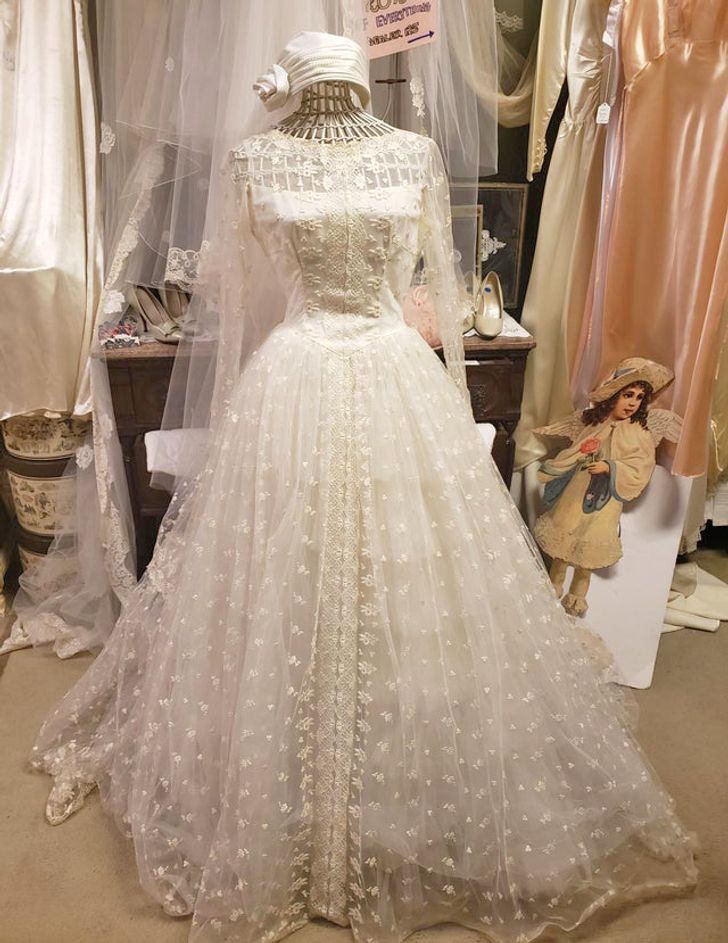
“This is the best $1.99 I will ever spend in my lifetime. The book has a photo of Stephen King and his autograph in it!”
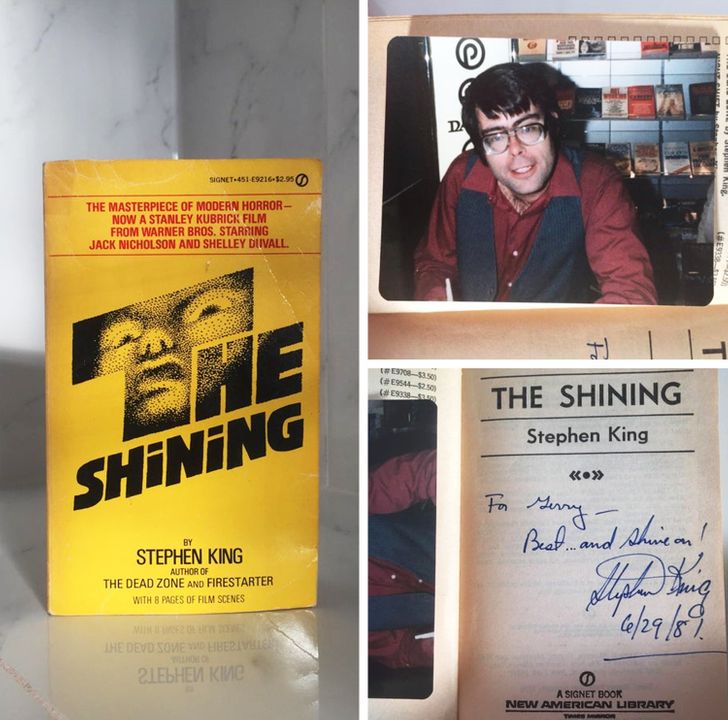
“This is a thrifted vintage gown that resembles the lamé dress Marilyn Monroe wore. I did not nail the pose, I know…”
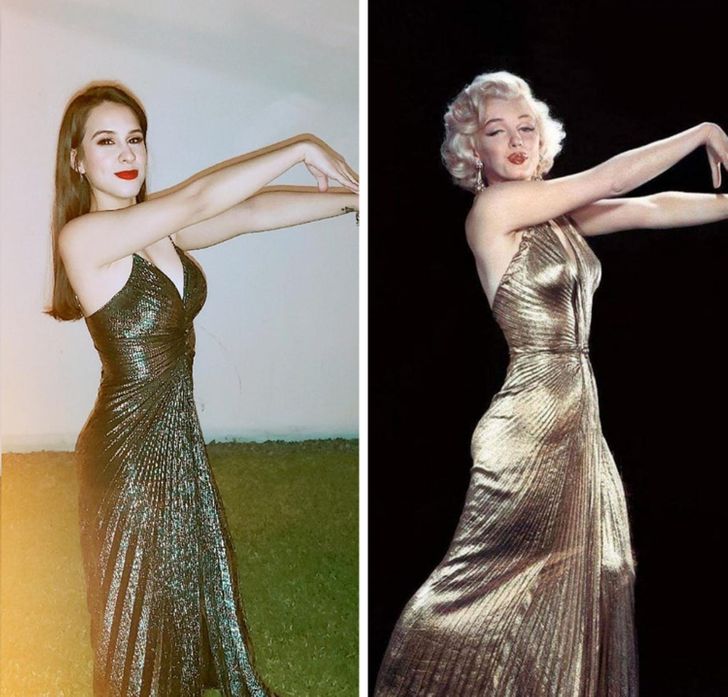
“Went to a house clearance sale and found this pin marked as ’costume jewelry’ for $5. Took it to a jeweler and they confirmed it’s unmarked gold with diamonds and sapphires.”

“3 designer blazers on the same trip to GW — I paid under $15 for all 3.”

“Fell in love with this painting and got it for $10!”
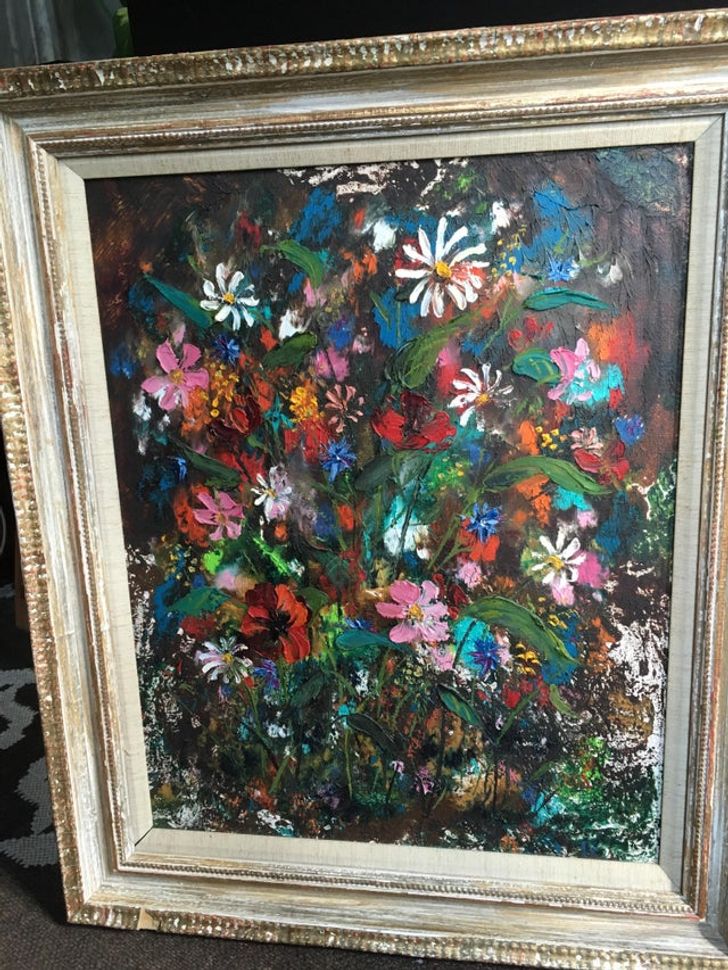
“I found a $5 vintage, heavily-beaded, seashell purse with a handmade tag inside. It’s so pretty!”
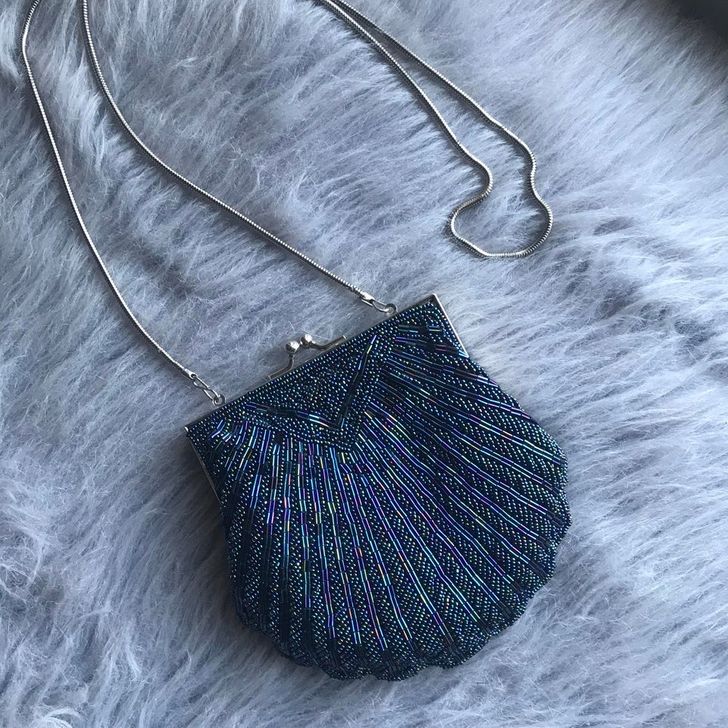
“Cute vintage strawberry salt and pepper shakers, new and in a box”

“Found $5 in this jacket I paid $6 for.”
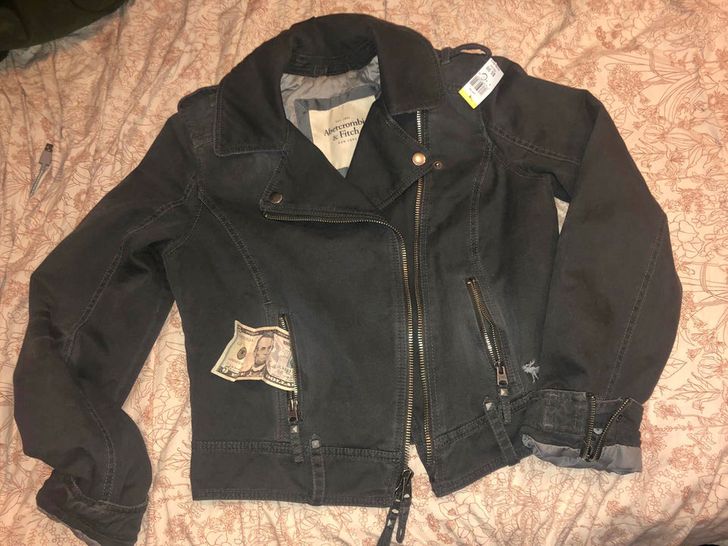
“I got a Harry Potter wand for $1.78.”

“I only started learning embroidery a few days ago and found 700 skeins of string for $5 at a thrift store. They retail for about $.50 each.”

“This was probably my favorite purchase ever! A $3 vintage wedding dress!”
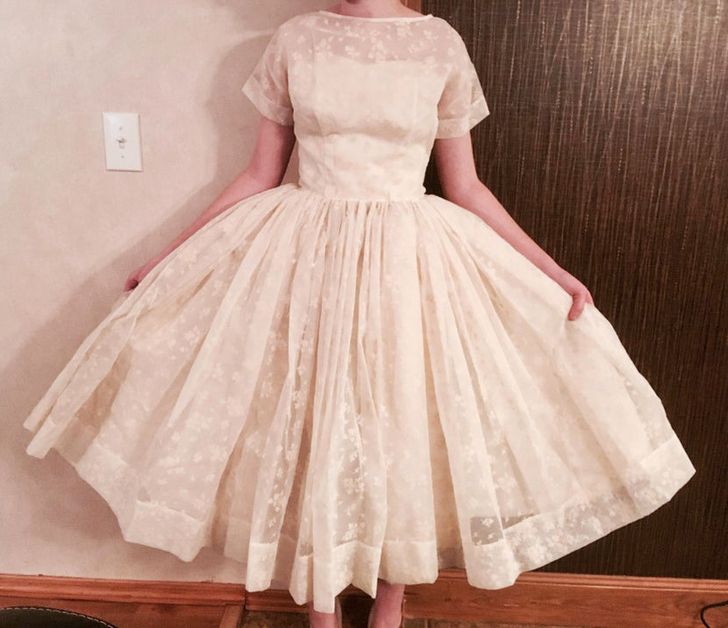
“I was told this was a green amethyst and haggled it down to $42. Took it to a jeweler to have it appraised — it’s a rare green diamond over 100 years old, conservatively worth more than $8,000!”
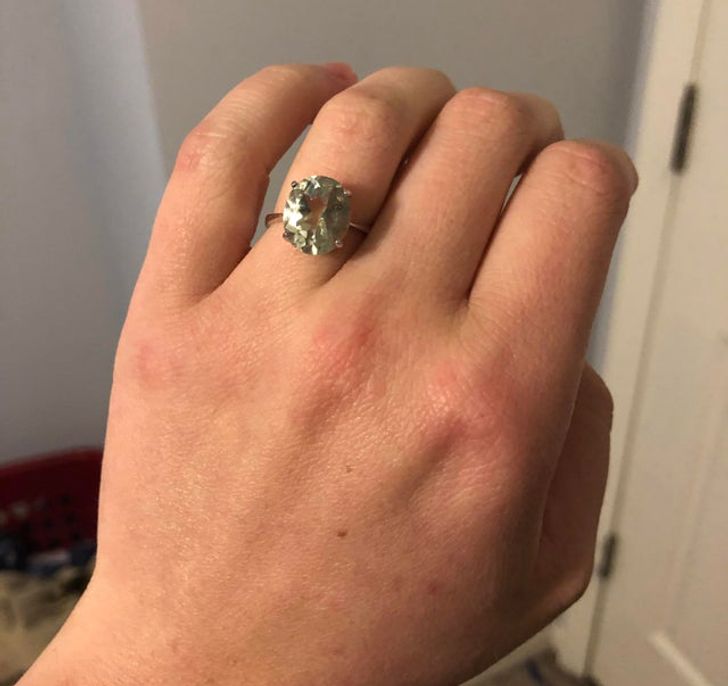
We’re sure that our readers have interesting stories too. Which of your purchases do you think was a really great find? Tell us!
Grandmother with entire body covered in tattoos reveals what she looked like decade ago
Many people like to get body modifications such as tattoos to express their individuality.
However, some people are completely against these kinds of things. Kerstin Tristan was one of the latter till 2015, when one incident changed her mind for good…
Keep reading to find out more about her journey.

56-year-old Kerstin Tristan is a mother and grandmother. But her hobbies vary a little outside of what might be considered the ‘norm’ for a grandmother. She likes body modification art, mostly tattoos.
She has her entire body covered in tattoos at this point, and to dedicate herself to this level, she had to spend a lot of money. But she did not always love tattoos so much. In fact, she revealed that till 2015, she actually hated tattoos. What changed her mind about them? It was in the same year that she got her first one, which completely shifted her view on the practice.
“I simply just wanted to try something new. We all live just once, and I thought that at my age, something real has to come,” she shared.

Since 2015, she has managed to spend 30,000 euros (approx. US $32,000) on modifying her body with tattoos alone. But thankfully, she has gotten a lot of attention and love because of her actions.
Her Instagram account has over 190,000 followers, and her TikTok videos have millions of views.
She is not shy to show off her looks! She posts pictures of herself showing off her entire body on Instagram. But she did not always look like this, just a decade ago, she was tattoo-free and looked completely different. She sometimes posts comparison photos for people to see the drastic change.
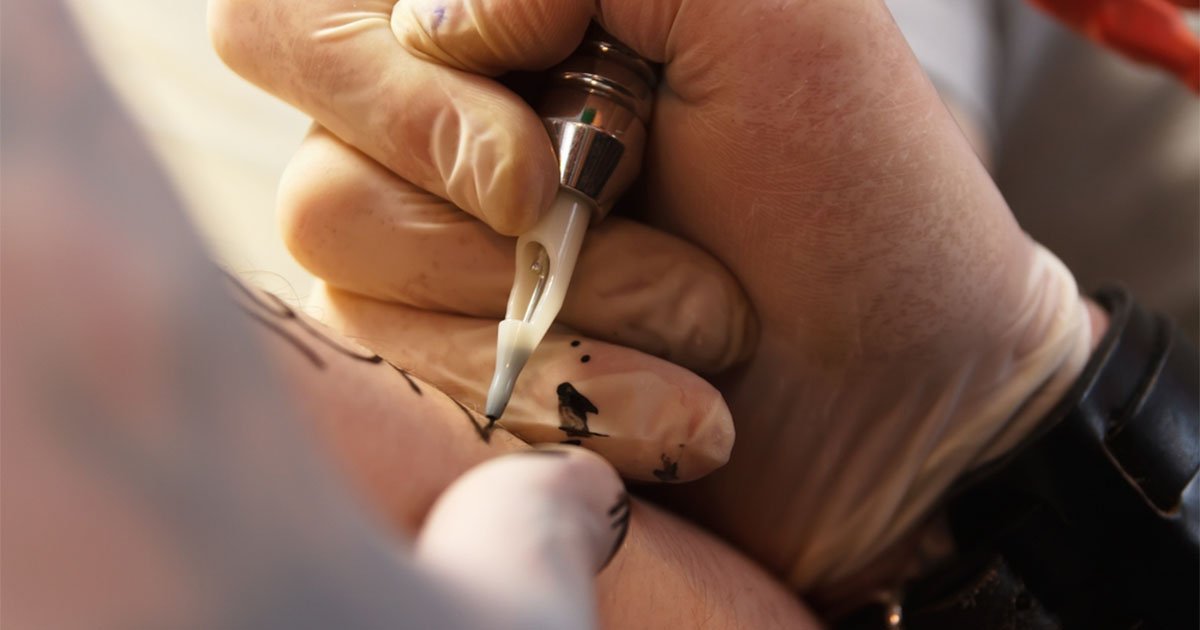
The German-based influencer has images of vibrant roses on her legs, a leopard print tattoo on her shoulders, and several detailed portraits on her arms. These tattoos happen to be among dozens of others on her entire body.
She loves how she looks now, saying, ‘”When I look at myself in the mirror, I see a beautiful meadow full of flowers that one has to love.”
And she is not the only one who loves her look, one fan wrote, “A beautiful work of art.” While, another person wrote, “Wow stunning photo.”
If you liked this piece, you might like the story of Melanie Griffith’s tattoo for Antonio Banderas and the shocking appearance it has today, almost a decade after their divorce.
Expressing yourself is not something that should end with age. If anything, Kerstin is a wonderful example of how age should not define how you choose to express yourself to the world. What do you think of her tattoos? Let us know in the comments.



Leave a Reply